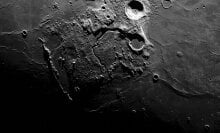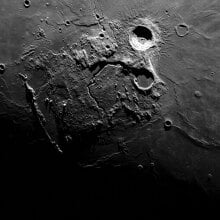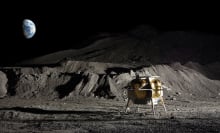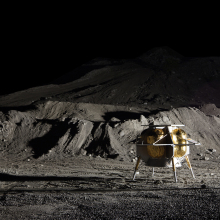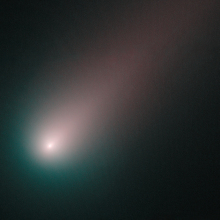NASA's Artemis mission will end soon, following a 25-day maiden voyage around the moon, but only after surviving the most intense re-entry into Earth's atmosphere, the space agency has ever attempted.
So far the new hardware has performed exceptionally well on this inaugural spaceflight, a crucial test before NASA is ready to put astronauts aboard in 2024. But to receive the stamp of approval, NASA needs to prove its new moonship, Orion, can not only survive space but the incredibly hot and fast return home—no small feat. It'll be traveling 32 times the speed of sound and will have to endure heat up to 5,000 degrees Fahrenheit, half the temperature of the sun's surface.
The return will also involve a so-called "skip entry," an unprecedented maneuver that will dip the ship into the atmosphere twice to slow it down and decrease the G-force loads on any would-be passengers. When humans are subjected to forces much greater than normal gravity, their hearts are put under tremendous stress, causing dizziness and sometimes blackouts.
Tweet may have been deleted (opens in a new tab)
The U.S. space agency will provide a live broadcast on its website of its recovery of Orion beginning at 11 a.m. ET on Sunday, Dec. 11. The capsule is expected to hit the Pacific Ocean at 12:39 p.m. At that point, the Navy will assist NASA's crew in towing the spacecraft to a ship for a safety checkout.
The Orion spacecraft is speeding toward Earth now, after having completed an engine burn and a close approach around the moon on Monday to harness its gravity for a slingshot back home. The flyby allowed for a dazzling photo-op of an earthrise.
Want more science and tech news delivered straight to your inbox? Sign up for Mashable's Top Stories newsletter today.
Tweet may have been deleted (opens in a new tab)
NASA has selected a splashdown site off the Baja peninsula, putting it on a trajectory that will avoid bad weather over the Pacific Ocean. Normally, the team would plan for a landing a few miles off the coast of San Diego, California. According to Ascent and Entry Flight Director Judd Frieling during a mission briefing Thursday, after seeing forecasts of a cold front moving right around the time Orion was to be expected, NASA decided to direct the moonship to a spot about 300 nautical miles south.
Because of the daylight re-entry, it's unlikely anyone on Guadalupe Island will see Orion fall through the sky, unless they're on a boat 100 miles at sea, said Jim Jeffries, Orion spacecraft integration manager.
"You're more likely to hear the sonic boom as the vehicle approaches than anything," he said.




